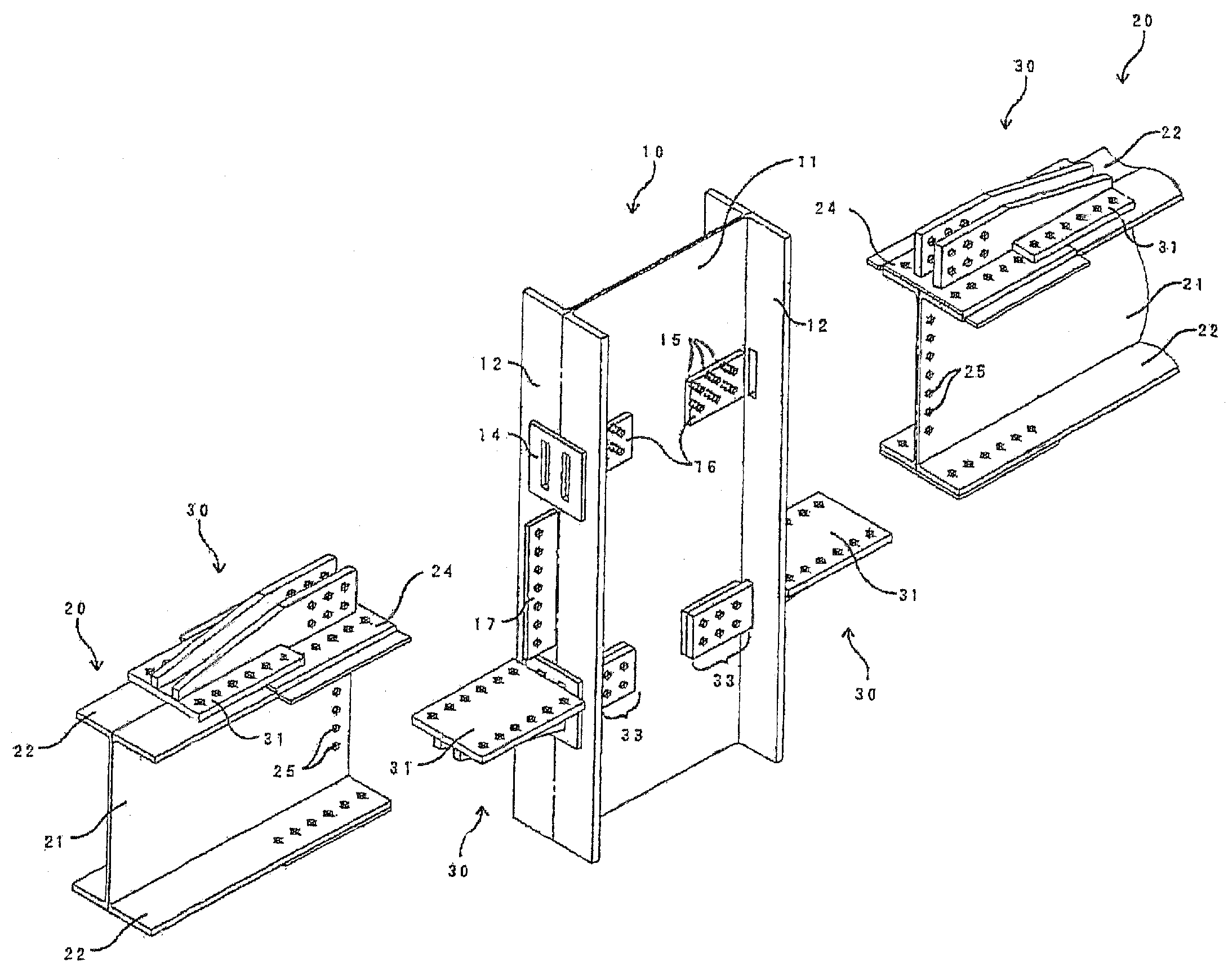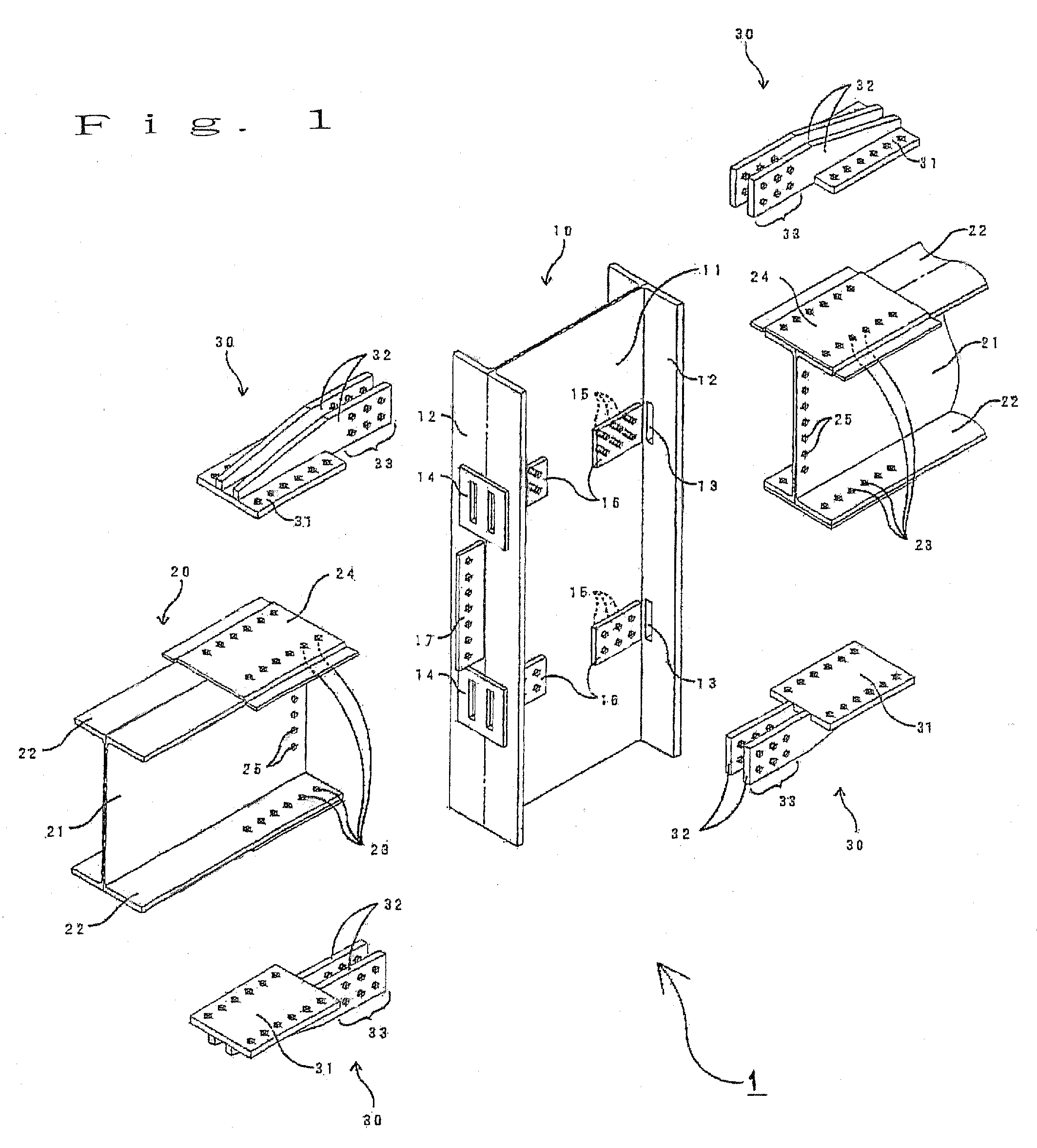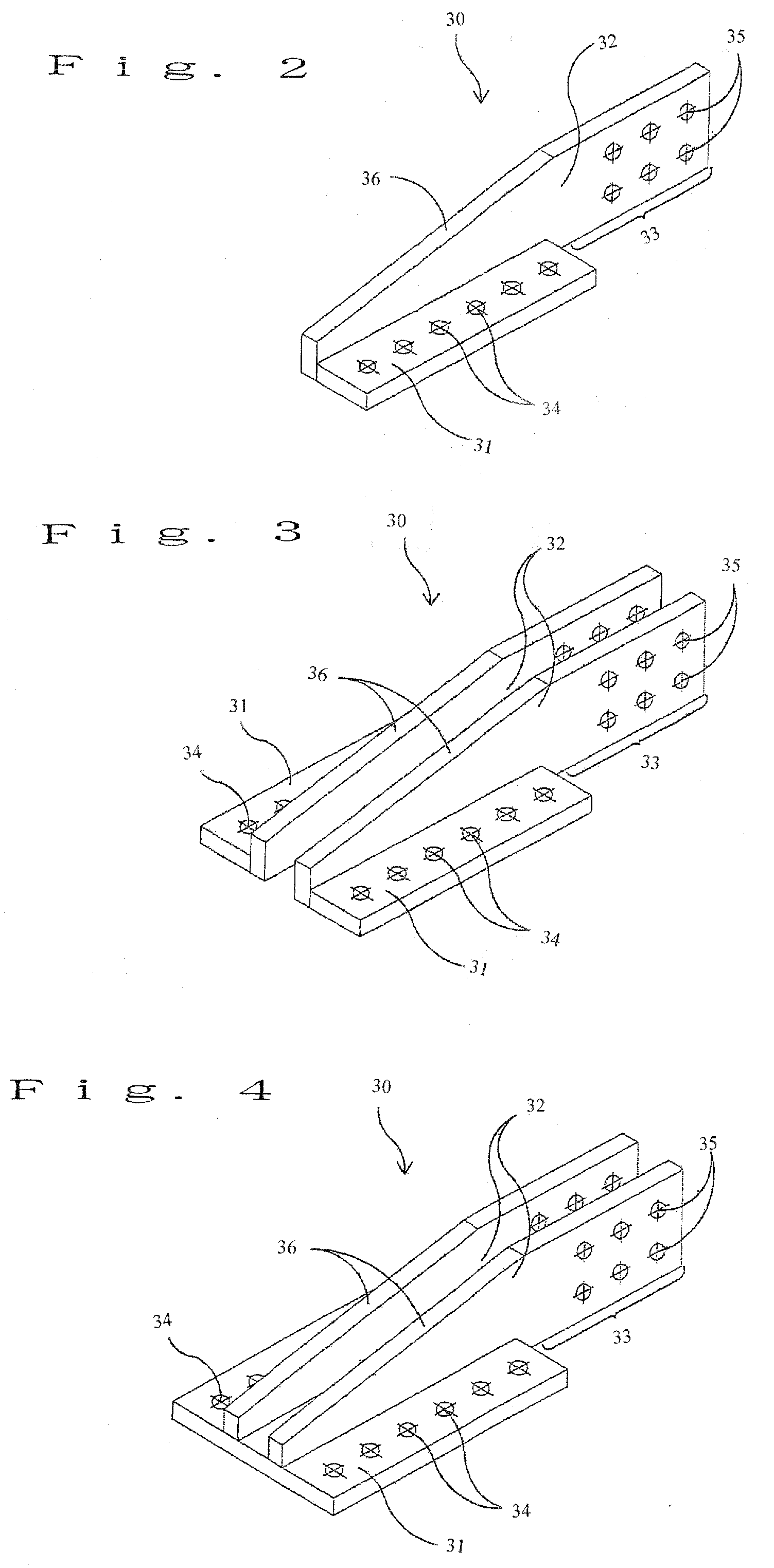Connecting structure for steel frame columns and steel frame girders
a technology of connecting structure and steel frame girder, which is applied in the direction of buildings, constructions, towers, etc., can solve the problems of parts being broken, no sufficient yield strength, and no sufficient yield strength, and achieves sufficient yield strength, sufficient yield strength, and smooth transmission
- Summary
- Abstract
- Description
- Claims
- Application Information
AI Technical Summary
Benefits of technology
Problems solved by technology
Method used
Image
Examples
Embodiment Construction
[0019]An exemplary embodiment of the present invention will be described below with reference to the accompanying drawings. FIG. 1 shows a perspective view of members constituting a connective structure of this exemplary embodiment. As shown in FIG. 1, a connective structure 1 is provided with an H beam-built steel frame column 10 and an H beam-built steel frame girder 20 crossing the steel frame column 10, and connects them with connective fittings 30. The steel frame column 10 has a web part 11 and flange parts 12 disposed on two sides of the web part 11. The steel frame girder 20 has a web part 21 and flange parts 22 disposed on two sides of the web part 21.
[0020]Two slit holes 13 are formed in each of the flange parts 12 of the steel frame column 10 symmetrically with respect to the center in the shorter side direction of the area where it crosses the flange parts 22 of the steel frame girder 20. In order to reinforce the yield strengths of the flange parts 12 against the boring...
PUM
| Property | Measurement | Unit |
|---|---|---|
| angle | aaaaa | aaaaa |
| areas | aaaaa | aaaaa |
| strength | aaaaa | aaaaa |
Abstract
Description
Claims
Application Information
 Login to View More
Login to View More - R&D
- Intellectual Property
- Life Sciences
- Materials
- Tech Scout
- Unparalleled Data Quality
- Higher Quality Content
- 60% Fewer Hallucinations
Browse by: Latest US Patents, China's latest patents, Technical Efficacy Thesaurus, Application Domain, Technology Topic, Popular Technical Reports.
© 2025 PatSnap. All rights reserved.Legal|Privacy policy|Modern Slavery Act Transparency Statement|Sitemap|About US| Contact US: help@patsnap.com



